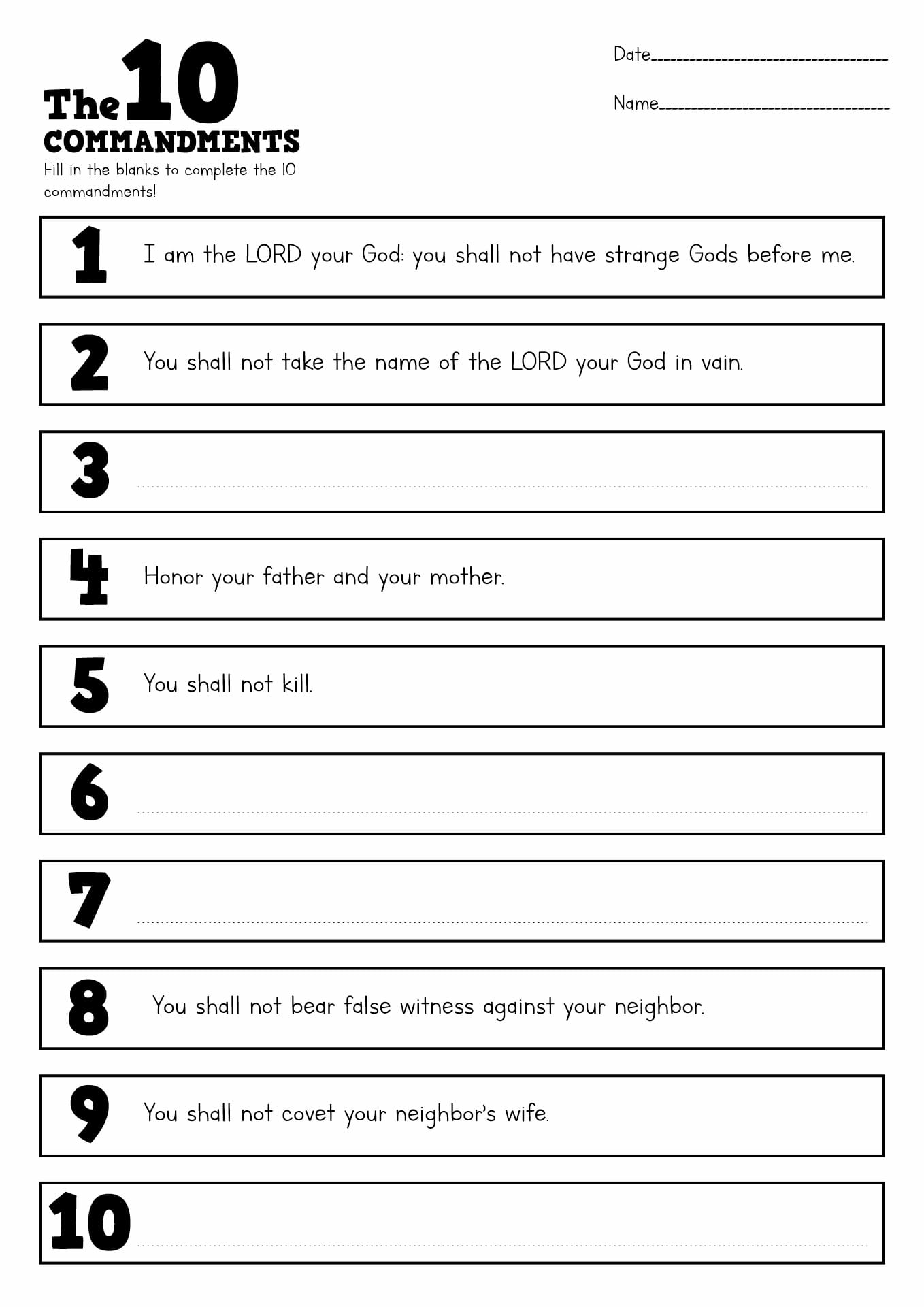Discover the timeless wisdom of the Ten Commandments with our collection of free printable resources. Whether for personal reflection, engaging children in faith-based learning, or enhancing your home or classroom, these printables offer a tangible connection to these ancient principles. Explore the teachings that have shaped civilizations for centuries and unlock the transformative power of the Ten Commandments.
Unlocking Ancient Wisdom: Exploring the Ten Commandments
The Ten Commandments, a cornerstone of Judeo-Christian tradition, serve as a moral compass, guiding principles that have influenced societies for millennia. Presented in the Book of Exodus as divinely inscribed on stone tablets given to Moses on Mount Sinai, they offer direction for righteous living, fostering respect, responsibility, and a harmonious relationship with the divine and with others. In today’s complex world, the Ten Commandments resonate as a timeless guide, promoting honesty, compassion, and ethical conduct. Some scholars suggest they continue to shape our laws and social norms, underpinning the pursuit of a just and peaceful society.
Engaging with the Commandments: Printable Resources for All
Delving into these principles can enrich lives, regardless of religious background. Printable resources provide a readily accessible and engaging way to explore these essential ideas. Here’s a glimpse into the variety of free printable Ten Commandments resources available:
| Printable Type | Description | Who It’s For |
|---|---|---|
| Simple Lists | Concise and easy-to-read lists of the Commandments in various translations (KJV, NIV, etc.). | Ideal for quick reference for all ages. |
| Activity Sheets | Coloring pages, puzzles, mazes, and interactive activities centered around the Commandments. | A fun and engaging way for children to learn. |
| Charts and Posters | Visually appealing representations of the Commandments for classroom or home display. | Reinforces memorization and provides visual reminders. |
| Craft Templates | Templates for creating Ten Commandments-themed crafts, fostering creativity and hands-on learning. | Perfect for Sunday school, homeschooling, or family projects. |
A simple online search for “Ten Commandments printable” will reveal numerous options. Refining your search with specifics like “Ten Commandments coloring pages for kids” or “Ten Commandments chart KJV” yields targeted results. Many websites offer these printables free of charge, making them accessible to all.
The Mystery of the Original Tablets: Where Are They Now?
The Bible recounts Moses descending Mount Sinai with two stone tablets inscribed with the Ten Commandments. The fate of these original tablets remains shrouded in mystery. The biblical account describes the first set being shattered by Moses in response to the Israelites’ worship of the golden calf. A second set, also divinely inscribed, was placed within the Ark of the Covenant. However, the Ark itself vanished after the destruction of the First Temple in Jerusalem in the 6th century BCE. Its location, and thus the fate of the second set of tablets, if they survived, is unknown.
Several theories exist regarding the Ark’s whereabouts:
| Theory | Location | Likelihood |
|---|---|---|
| Hidden in Jerusalem | Beneath the Temple Mount or a secret chamber. | Possible, but remains unproven. |
| Taken to Babylon | Lost or destroyed amidst the conquest. | Possible destruction or undiscovered location. |
| Hidden elsewhere | Concealed in a secret location before the Temple’s destruction. | Possible, though less likely. |
| Taken to Ethiopia | Located in Axum, according to Ethiopian tradition. | While intriguing, limited evidence supports this theory. |
While the physical tablets themselves are likely lost to time, their essence, the Ten Commandments themselves, endures. Their impact on moral and legal systems across cultures is undeniable. While the precise location of the original tablets may remain a mystery, the principles they embody continue to inspire and guide.
Decoding the Commandments: A Simplified Guide
The Ten Commandments, foundational to both Judaism and Christianity, offer a framework for ethical living. Here’s a simplified interpretation:
| Commandment | Simplified Meaning | Modern Application |
|---|---|---|
| No other gods before me | Prioritize your relationship with God. | Focus on your spiritual growth and avoid placing other things above your faith. |
| No idols | Avoid worshipping false images. | Recognize that God transcends physical representation. Guard against letting material possessions or worldly pursuits become idols. |
| Don’t misuse God’s name | Treat God’s name with reverence. | Avoid using God’s name lightly or disrespectfully. |
| Keep the Sabbath holy | Dedicate time for rest and worship. | Set aside regular time for spiritual reflection, prayer, and community connection. |
| Honor your parents | Respect and appreciate your parents. | Show gratitude for their guidance and support. |
| Do not murder | Respect the sanctity of human life. | Advocate for peace and justice, opposing violence in all its forms. |
| Do not commit adultery | Be faithful in your marriage. | Cultivate trust, honesty, and commitment in your relationships. |
| Do not steal | Respect the property of others. | Be honest in your dealings and avoid taking what does not belong to you. |
| Do not give false testimony | Be truthful in your words and actions. | Uphold integrity and avoid spreading gossip or lies. |
| Do not covet | Be content with what you have. | Practice gratitude and avoid envying the possessions of others. |
It’s important to note that interpretations of these commandments can vary, and ongoing discussions explore their relevance in contemporary society. Some scholars suggest their original context influences modern understanding, while others view their principles as timeless moral truths. They offer a framework for personal reflection and ethical decision-making, contributing to a more just and compassionate world.
For more information on cardiac rhythms, explore our overview of sinus rhythm with pjc.
- Unlock Water’s Symbolism: A Cross-Cultural Exploration - April 20, 2025
- Identify Black and White Snakes: Venomous or Harmless? - April 20, 2025
- Unlocking Potential: Origins High School’s NYC Story - April 20, 2025















